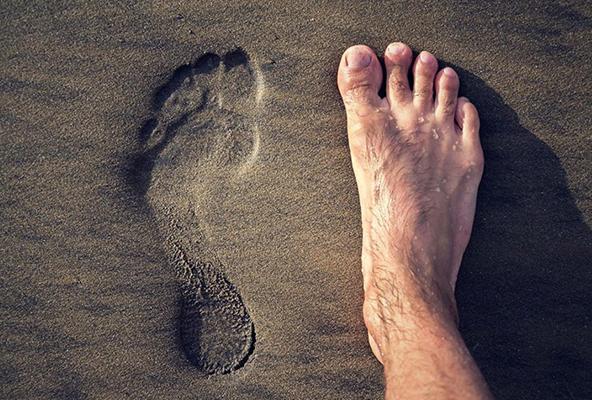What is Sensory Feedback and Why Do You Need It?
In feet, sensory feedback is essentially information our foot passes onto our brain, which helps us understand what’s underfoot and make decisions quickly. One of the biggest downsides of conventional shoes is the cushioned barrier they put up between your feet and the ground. Our feet have been honed by evolution to provide us with everything we need to read the ground we’re walking or running on. Each sole has as many as 200,000 information gathering nerve endings, so it doesn’t really make sense to cut yourself off from such a wealth of useful sensory feedback – especially if you’re looking to improve your athletic performance, or even just to feel more confident as you walk.
Going minimal with Vivo can help of course – our commitment to WTF - wide, thin and flexible shoes means greater access to the information which conventional, cushioned shoes can often obscure. But it’s important to remember what it is that we’re trying to replicate with our shoes: the natural foot, and its unobstructed connection with the brain, a connection that can help you improve and maintain important psychical factors like balance to spatial awareness.


If our brains are properly stimulated, then they’ll become more responsive and readily adaptive, however if an aspect of our brain’s function is neglected, then it won’t work as well when needed, if at all! So by not properly exploiting the connections that exist between our brains and our feet, we’re essentially neglecting an entire region of the brain – a whole area of lifelong cognitive development.
Barefoot Kids
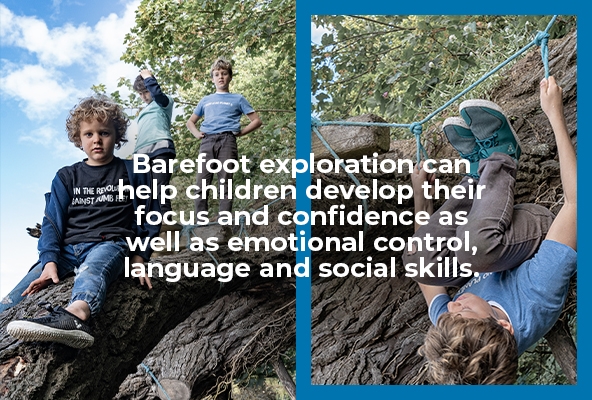

This lifelong relationship between foot and brain has its basis in childhood – like all long lasting habits, good and bad! For at least the last fifty years, children have been encouraged – often against their natural instincts – to wear shoes that hinder the tasks our feet are more than capable of dealing with all on their own. Shoes that smother young feet with unnecessary, and sometimes harmful, bells and whistles like toe springs, cushioning and arch support. If it’s important for an adult to have access to all the sensory information a bare foot can provide, then that goes double for developing feet! Anyone who’s had a hand in bringing up a child will know it’s obvious that young minds are drawn to the natural world – and as they’re developing a relationship with the world around them, and with the capacity and potential of their own bodies, it’s important that they’re able to closely and instinctively feel the ground beneath. Just as it’s doubly important to nurture this relationship, the rewards in terms of cognitive development are huge – barefoot exploration can help children develop their focus and confidence as well as emotional control, language and social skills. Going without shoes regularly means young minds won’t miss out on an opportunity to establish a healthy relationship with nature and their own sense of balance and movement – and it means they won’t have to deal with the hassle of correcting that relationship much later on.
What is Proprioception and Why Is It Important For the Brain?
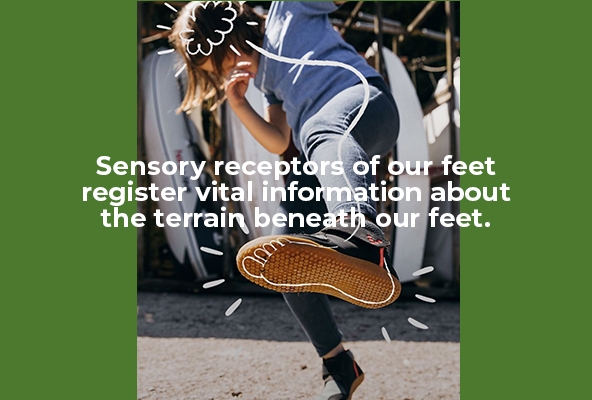

So what exactly are these functions that children’s brains are refining as they grow, and which continue to develop in adulthood? Alongside the familiar five key senses, one often overlooked sense which is crucial to movement is Proprioception. This is simply our perception of the body’s orientation in space and motion, stemming from signals provided directly to the brain by proprioceptor nerve endings in our muscles and joints. When we’re barefoot or as close to barefoot as possible in a shoe, these sensory receptors register vital information about the terrain beneath our feet, and help us both maintain balance and develop a keener awareness of our surroundings. Nurturing this sense in children gives them a foundation to build on for the rest of their lives, by giving them early and easy access to the cognitive tools they need to foster confident movement, as well as encouraging a natural foot-brain connection which will let them readily read their environment and respond to challenges underfoot quickly and robustly.
Reflexology and Foot Massage
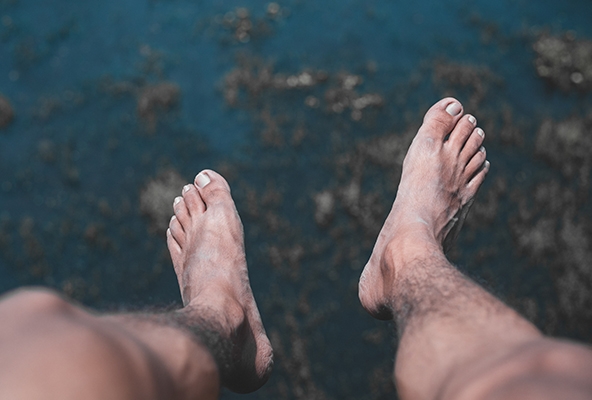

Our ancestors knew they had to look after their feet, and even if they weren’t totally aware of the scientific principles that underline the connection between foot and brain, they seemed keenly aware that it was a beneficial one. For thousands of years, we’ve been massaging our hard working feet as a kind of maintenance, often guided by the belief that stimulating certain areas of the foot can release, or bring in to balance, ‘energies’, thought to be beneficial to the foot, the brain, and the entire body.
Sound familiar? In the tenets of one particular system of massage, reflexology, which is based particularly on principles derived from traditional Chinese medicine, we can find striking parallels with everything we’ve already looked at. Reflexology frames the innate relationship between foot and brain as a result of our feet containing ‘reflex points’ which essentially correspond to the nervous system. A reflexologist can help bring these ‘energies’ into balance in every part of the body by massaging these ‘reflex points’, relaxing our feet and possibly helping to improve our sleep and even helping to counter migraines and depression. In this system, the ‘reflex point’ for the brain is the tip of the big toe – the most useful toe for balance and stability, and an important receiver of sensory feedback!
How We Could All Benefit From a Barefoot Life
However, in both children and adults, this intuitive movement sense is easily blunted by indoor surfaces like wood, tile, and carpet, as well as the synthetic materials – rubber and plastic – found in shoes. If going barefoot re-establishes a connection between foot and brain, what about the connection between ourselves and the Earth? If it’s been thrown out of balance, then we’re thrown out of balance too, and disconnecting from the Earth means disconnecting not just from the ground but from the beneficial, natural energy it holds. Going barefoot is a key part of unlocking that potential.
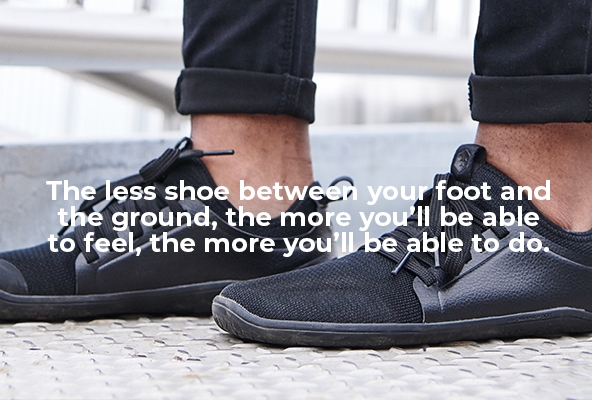

Whether you’re trying to keep in shape mentally or emotionally, going barefoot is an indispensable tool in any arsenal. The less shoe between your foot and the ground, the more you’ll be able to feel, the more you’ll be able to do.
Sources:
http://www.naturalchildmagazine.com/1210/barefoot-babies.htm
https://www.correcttoes.com/foot-help/how-going-barefoot-affects-your-brain/
https://tiphero.com/barefoot-brain-benefits
https://www.leaf.tv/articles/how-to-locate-the-reflexology-gallbladder-zone/
